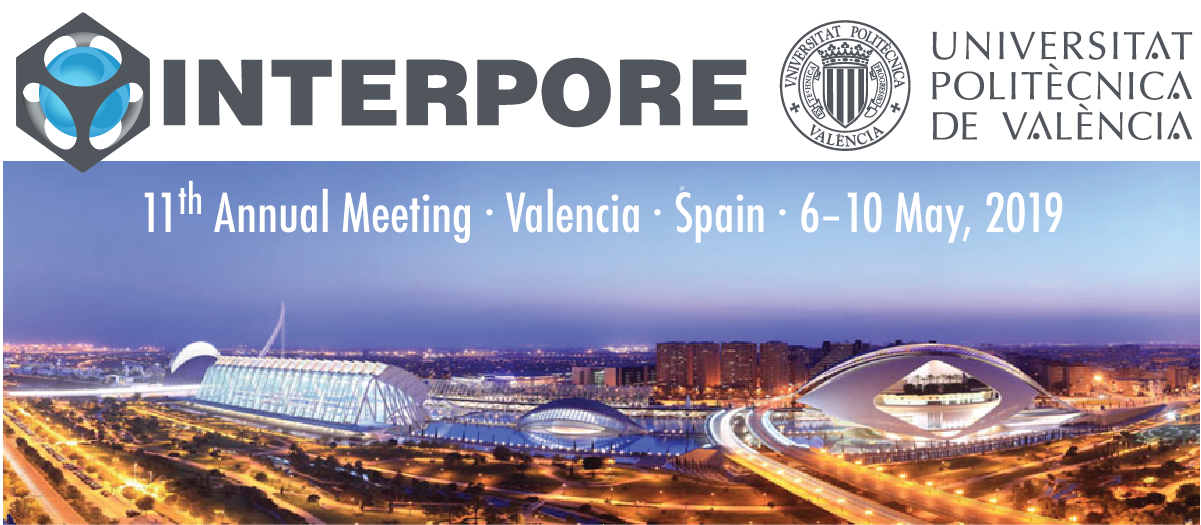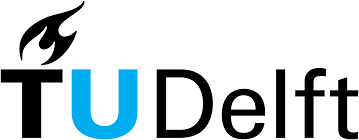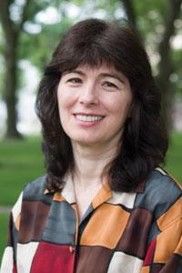 |
Materials, Chemistry & Chemical Biology Harvard University |
Title:
Multifunctionality of liquid-filled porous materials: from encryption and anti-fouling to efficient catalysis
Abstract:
Liquids entrapped within a structured solid begin to exhibit unique behaviors often providing the surrounding material with unprecedented properties. Recently we have developed two award-winning materials platforms (R&D 100 awards in 2012 and 2013), both based on the infusion of a liquid into a porous substrate. First, we introduced a new strategy to create self-healing, anti-fouling materials (so-called Slippery, Lubricant-Infused Porous Surfaces, or SLIPS) that outperform state-of-the-art materials in their ability to resist ice and microbial adhesion and repel various simple and complex liquids. Second, we pioneered a technique for patterning 3D photonic crystals, generating complex wettability patterns, and illustrated multilevel encryption, with selective decoding by specific liquids, so-called Watermark Ink, or W-INK. Generalized, low-cost, and scalable methods to manufacture SLIPS and W-Ink on glass, ceramics, polymers, fabrics and metals will be presented. We anticipate that slippery surfaces can find important applications as antifouling materials in medicine, construction, fluid handling and transportation, while chemically patterned photonic structures can serve as colorimetric indicators for liquids, used in encryption and anti-tampering applications, and provide a novel platform for efficient catalytic materials.
Bio:
Joanna Aizenberg pursues a broad range of research interests that include biomimetics, smart materials, wetting phenomena, bio-nano interfaces, self-assembly, crystal engineering, surface chemistry, structural color and biomineralization. She received the B.S. degree in Chemistry in 1981, the M.S. degree in Physical Chemistry in 1984 from Moscow State University, and the Ph.D. degree in Structural Biology from the Weizmann Institute of Science in 1996.
After spending nearly a decade at Bell Labs, Joanna joined Harvard University, where she is the Amy Smith Berylson Professor of Materials Science, Professor of Chemistry and Chemical Biology, Director of the Kavli Institute for Bionano Science and Technology and Platform Leader in the Wyss Institute for Biologically Inspired Engineering. The Aizenberg lab's research is aimed at understanding some of the basic principles of biological architectures and the economy with which biology solves complex problems in the design of multifunctional, adaptive materials. She then uses biological principles as guidance in developing new, bio-inspired synthetic routes and nanofabrication strategies that would lead to advanced materials and devices, with broad implications in fields ranging from architecture to energy efficiency to medicine. She has >200 publications and >40 issued patents.
Aizenberg is elected to the American Academy of Arts and Sciences, American Philosophical Society, American Association for the Advancement of Science; and she is a Fellow of American Physical Society, Materials Research Society and External Member of the Max Planck Society. Dr. Aizenberg received numerous awards from the American Chemical Society and Materials Research Society, including Fred Kavli Distinguished Lectureship in Nanoscience, Ronald Breslow Award for the Achievement in Biomimetic Chemistry, Arthur K. Doolittle Award in Polymeric Materials, ACS Industrial Innovation Award, and was recognized with two R&D 100 Awards for best innovations in 2012 and 2013 for the invention of a novel class of omniphobic materials and watermark ink technologies. In 2015 she received Harvard’s most prestigious Ledlie Prize that is awarded for the most valuable contribution to science made by a Harvard scientist.
Joanna has served at the Board of Directors of the Materials Research Society and at the Board on Physics and Astronomy of the National Academies. She served on the Advisory Board of Langmuir and Chemistry of Materials, on Board of Reviewing Editors of Science Magazine, and is an Editorial Board Member of Advanced Materials.
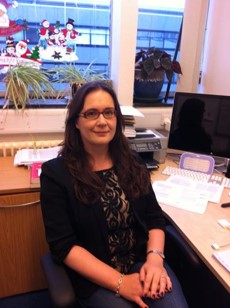 |
Prof. Tiina Roose Biological and Environmental Modelling within Engineering and the Environment University of Southampton. |
Title:
Multiscale Modelling of Plant-Soil Interaction
Abstract:
In this talk I will describe a state of the art image based model of the soil-root interactions, i.e., a quantitative, model of the rhizosphere based on fundamental scientific laws. This will be realised by a combination of innovative, data rich fusion of structural imaging methods, integration of experimental efforts to both support and challenge modelling capabilities at the scale of underpinning bio-physical processes, and application of mathematically sound homogenisation/scale-up techniques to translate knowledge from rhizosphere to field scale. The specific science question I will address with these techniques is how to translate this knowledge from the soil pore and single root scale to root system, field and ecosystem scale in order to predict how the climate change, different soil management strategies and plant breeding will influence the soil fertility.
Bio:
I was born in Estonia under "fruitful communism". I obtained my undergraduate degree in systems engineering from Tallinn Technical University. I then completed a MSc in Mathematical Modelling and Numerical Analysis and DPhil at the Mathematical Institute, University of Oxford. Next I spent two years as a postdoc at Harvard in the medical school. Following this I returned to Oxford and held a Royal Society University Research Fellowship from 2004 to 2009 in Oxford and then from 2009 to 2013 in the Faculty of Engineering and Environment at the University of Southampton where I currently hold the Chair of Biological and Environmental Modelling.
|
|
|
 |
Energy and Resources Engineering Peking University |
Title:
Machine Learning Physical Processes and Governing Equations from Data for Flow in Porous Media
Abstract:
Porous flow problems may consist of several physical processes. Some of such processes may be described by rigorous models derived from first principles or conservation laws. However, this may not be true for complex processes, for which approximate or empirical models are usually proposed based on theoretical considerations, lab experiments, or data analyses. Alternative models of various accuracies or complexities may be proposed for the same physical process by considering different conditions, and these models usually have several model parameters. For the specific occurrence of a physical problem, it may not be clear about which processes occurred (or dominated). And, which is the proper empirical model among the alternatives for a specific process? Also, what are the values of the corresponding model parameters? In this work, an integrated framework is developed that combines the data driven (machine learning) and data assimilation (inverse modeling) methods for simultaneously identifying physical processes and inferring model parameters. Spatiotemporal data is first divided into training data set and testing data set. And, using the training data set, a data driven method is developed to learn the governing equation of the considered physical problem by identifying the occurred (or dominated) processes and selecting the proper empirical model(s). Via introducing a prediction error of the learned governing equation for the testing data set, a data assimilation method is devised to estimate the uncertain model parameters of the selected empirical model. For the subsurface flow and contaminant transport problems investigated, the results show that the proposed method can identify the underlying physical processes adequately. We further extend the proposed method for data driven discovery of governing equation with uncertain parameters in the presence of measurement errors, and satisfactory results are obtained.
Bio:
Professor Zhang is the Dean of College of Engineering and Executive Dean of Graduate School at Peking University, Beijing, China. He had held positions as Senior Scientist at Los Alamos National Laboratory, Miller Chair Professor at the Department of Petroleum and Geological Engineering at the University of Oklahoma, and Chair Professor at the University of Southern California. He has authored 2 books and published over 170 peer-reviewed papers. He earned both his Master’s degree and Ph.D. in hydrology and water resources in 1992 and 1993, respectively, from the University of Arizona. Professor Zhang is an internationally well-known expert in unconventional oil and gas production, groundwater hydrology, and geological carbon sequestration, whose research achievements in stochastic modeling, numerical simulation, and inverse modeling are widely adopted by his peers. He has served as a panelist on the RCUK Review of Energy, UK Research Councils, a member of US National Research Council’s Committee on New Research Opportunities in the Earth Sciences, and a council member of World Economic Forum Global Agenda Council on New Energy Architecture. Professor Zhang is an Honorary Member of Society of Petroleum Engineers, a Fellow of Geological Society of America, and a Member of the U.S. National Academy of Engineering.
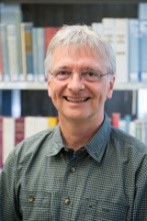 |
Prof. Bernhard Weigand Aerospace Thermodynamics University of Stuttgart |
Title:
Numerical simulations of turbulent flows and heat transfer in regular porous structures
Authors:
Prof. Dr.-Ing. Bernhard Weigand (with Dr.-Ing. Xu Chu, Dr. Guang Yang and Prof. Dr.-Ing. Rainer Helmig)
Abstract:
Porous media can be found in nature with a broad range of geometrical characteristics and are also involved in many industrial and scientific applications with simplified regular structures. Such regular porous structures receive increasing importance because of manufacturing techniques based on selective laser melting. In several industrial applications, the pore-scale Reynolds number exceed the critical Reynolds number (which is about 300) and the flow in the porous structure is found to be turbulent. For such applications, the pore-scale flow and heat and mass transfer behavior is still not well understood. Here Direct Numerical Simulations (DNS) help to understand the complex flow features. For example, for a regular porous medium, consisting of square cylinders, DNS can be used for a very detailed flow analysis. In such investigations, it was found e.g. by anisotropy analysis using a barycentric map that the turbulence in porous media is highly isotropic in the macro-scale, but not in the micro-scale. After looking into the microscopic behavior, it is also very important to investigate the interaction between a porous structure and a free-flow. For example, the flow in a T-junction with a flow vertically discharged through a structured porous medium can be analyzed numerically. For such larger domains of course DNS would not be appropriate for case studies. Thus, Reynolds averaged Navier-Stokes (RANS) methods can be used. For such investigations, it is of particular interest to study the interface between porous structure and free channel flow. Numerical investigations can help in such configurations to understand e.g. the limitations of the Beaver-Joseph interface conditions and can help to find ways to improve it. This will then help improving models based on REVs to better capture the link between porous structures and free flows.
Bio:
Prof. Dr.-Ing. habil. Bernhard Weigand, born 10.1.1962 in Germany, is currently Professor for Thermodynamics at the University of Stuttgart. He is the director of the institute for Aerospace Thermodynamics (ITLR) at the faculty of Aerospace Engineering and Geodesy. After his PhD at the TU Darmstadt in 1992, he joined ABB Power Generation in Switzerland, where he worked up to March 1999 on cooling technologies and designs of gas turbine blades. In 1999 he joined the University of Stuttgart as a full Professor. He is currently the speaker of the collaborative research council SFB-TRR 75 (“Droplet dynamics under extreme ambient conditions”) and also of the Research Training Group GRK 2160 (“Droplet Interaction Technologies”). He is an editor of the Int. J. Heat Mass Transfer, an editor of the Int. Comm. Heat Mass Transfer and an editor of the book series Mathematical Engineering. He is the author of seven books, more than 400 papers, with more than 150 papers published in peer reviewed journals, and he holds about 40 different patent applications or patents.
